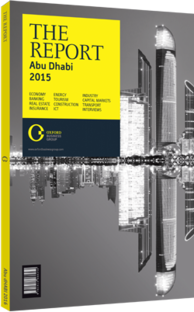Sheikh Hamdan bin Zayed Al Nahyan, Ruler’s Representative in the Western Region: Interview

Interview: Sheikh Hamdan bin Zayed Al Nahyan
What new investment incentives are being considered to encourage greater inflows of foreign direct investment (FDI) into the region?
SHEIKH HAMDAN BIN ZAYED AL NAHYAN: Abu Dhabi’s government developed Abu Dhabi Economic Vision 2030 and the Al Gharbia 2030 Plan to establish goals for the economic development of the region. We have, since the completion of the plan for Economic Vision 2030, undertaken a programme of investment in infrastructure aimed at supporting our objectives for Al Gharbia, including road transport and major rail links.
In setting out a clear and comprehensive plan with challenging but realistic goals for the economic development of the region, we have sought to establish a reputation for creative and collaborative problem solving, and the forging of trusted partnerships between the government and the private sector. This transparency and careful governance ensures that the private sector, including local and international businesses and entrepreneurs, can invest in the region knowing they are backed by the support and vision of our leadership.
Our strategy and our partnerships with the private sector will continue to focus on the realisation of the Al Gharbia 2030 Plan, creating trusted partnerships between the government and the private sector, and encouraging FDI into a broad range of key priority areas, supporting the development of our unique natural assets.
How are tourism assets being developed to attract both UAE residents and international visitors to the region of Al Gharbia?
SHEIKH HAMDAN: Abu Dhabi has a strong cultural tradition, and the emirate’s leadership has embraced this as a part of its strategy for encouraging local, regional and international tourism.
The government of Abu Dhabi continues to plan and organise a diverse programme of high-quality events, ranging from heritage- and culture-focused activities to major international sporting events in Al Gharbia. These events have proven to be successful and have formed the keystone of our strategy for attracting both UAE residents and international visitors to the Al Gharbia region.
We will continue to build on the promotion of our underlying natural assets within the region of Al Gharbia, including the stunning desert areas in Liwa, the natural coastlines in Mirfa, our unique cultural heritage in locations such as Delma, as well as our wildlife ecosystems and tourism destinations such as Sir Bani Yas Island.
The introduction of regular flights into the region from Abu Dhabi City has further enhanced the appeal of Al Gharbia as a centre for tourism, and we expect to continue to see strong growth in the leisure and hotel sector. This is, in turn, expected to result in increased investment in the tourism sectors, which will create new opportunities for both local and international investors.
In what ways are large-scale projects generating opportunities for small and medium-sized enterprises (SME) and related support services?
SHEIKH HAMDAN: The rapid economic growth of the region, driven by large-scale energy and infrastructure projects, is creating a cascade of opportunities for supporting entrepreneurship among local SMEs and investors. The Department of Economic Development’s strategy for Al Gharbia has aimed at broadening the number of sectors taking part in economic activity.
Every large-scale project is reviewed by leadership, which is supported by our highly skilled government specialists, to establish where further opportunities might be available to SMEs. Moreover, as employment is created through this broadening of the base, we see new opportunities being created for SMEs and entrepreneurs around social infrastructure such as education, medical services and tourism.
You have reached the limit of premium articles you can view for free.
Choose from the options below to purchase print or digital editions of our Reports. You can also purchase a website subscription giving you unlimited access to all of our Reports online for 12 months.
If you have already purchased this Report or have a website subscription, please login to continue.

